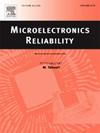Effect of Ni nanoparticles reinforcement on wettability, microstructure and mechanical properties of SAC387 lead-free solder alloy
IF 1.9
4区 工程技术
Q3 ENGINEERING, ELECTRICAL & ELECTRONIC
引用次数: 0
Abstract
The study investigates the influence of nickel (Ni) nanoparticles on the wettability, microstructure, and mechanical properties of Sn-3.8Ag-0.7Cu (SAC387) lead-free solder alloy. Nanocomposite solders containing 0.3 wt% and 0.5 wt% Ni were prepared and reflowed at temperatures of 230 °C, 250 °C, and 270 °C to evaluate their performance on copper substrates with a surface roughness (Ra) of 0.01 ± 0.002 μm. Wettability improved with increasing reflow temperature; however, the addition of Ni nanoparticles had minimal direct impact on spreading behavior. Microstructural analysis revealed enhanced formation of interfacial intermetallic compounds (IMCs), particularly (Cu,Ni)6Sn5 which contributed to improved joint stability. The optimal mechanical performance was observed at 250 °C with 0.3 wt% Ni addition, yielding a 51.14 % increase in shear strength compared to the unreinforced solder. Microhardness also improved significantly by 43.7 % at the IMC layer and 18.3 % in the solder bulk. Weibull analysis further confirmed higher joint performance with Ni nanoparticle incorporation. These findings highlight the potential of addition of Ni nanoparticles in improving the performance of SAC387 solder joints in electronic packaging.
Ni纳米颗粒增强对SAC387无铅钎料合金润湿性、显微组织和力学性能的影响
研究了纳米镍对Sn-3.8Ag-0.7Cu (SAC387)无铅钎料合金润湿性、微观结构和力学性能的影响。制备了含有0.3 wt%和0.5 wt% Ni的纳米复合钎料,并在230°C、250°C和270°C的温度下回流,以评估其在表面粗糙度(Ra)为0.01±0.002 μm的铜衬底上的性能。润湿性随着回流温度的升高而提高;然而,Ni纳米粒子的加入对扩散行为的直接影响很小。微观结构分析表明,界面金属间化合物(IMCs)的形成增强,特别是(Cu,Ni)6Sn5的形成有助于提高接头的稳定性。在250°C和0.3 wt% Ni添加量下观察到最佳力学性能,与未增强焊料相比,抗剪强度提高了51.14%。IMC层的显微硬度提高了43.7%,焊料体的显微硬度提高了18.3%。Weibull分析进一步证实,纳米镍颗粒的掺入提高了接头性能。这些发现突出了Ni纳米颗粒在改善SAC387电子封装焊点性能方面的潜力。
本文章由计算机程序翻译,如有差异,请以英文原文为准。
求助全文
约1分钟内获得全文
求助全文
来源期刊

Microelectronics Reliability
工程技术-工程:电子与电气
CiteScore
3.30
自引率
12.50%
发文量
342
审稿时长
68 days
期刊介绍:
Microelectronics Reliability, is dedicated to disseminating the latest research results and related information on the reliability of microelectronic devices, circuits and systems, from materials, process and manufacturing, to design, testing and operation. The coverage of the journal includes the following topics: measurement, understanding and analysis; evaluation and prediction; modelling and simulation; methodologies and mitigation. Papers which combine reliability with other important areas of microelectronics engineering, such as design, fabrication, integration, testing, and field operation will also be welcome, and practical papers reporting case studies in the field and specific application domains are particularly encouraged.
Most accepted papers will be published as Research Papers, describing significant advances and completed work. Papers reviewing important developing topics of general interest may be accepted for publication as Review Papers. Urgent communications of a more preliminary nature and short reports on completed practical work of current interest may be considered for publication as Research Notes. All contributions are subject to peer review by leading experts in the field.
 求助内容:
求助内容: 应助结果提醒方式:
应助结果提醒方式:


